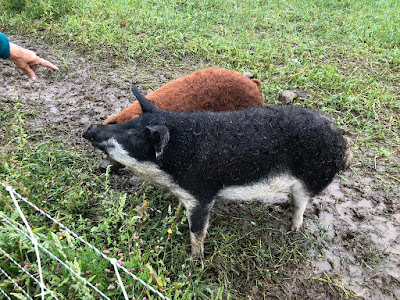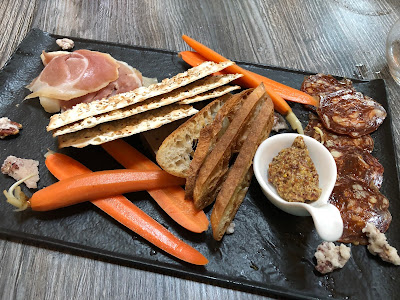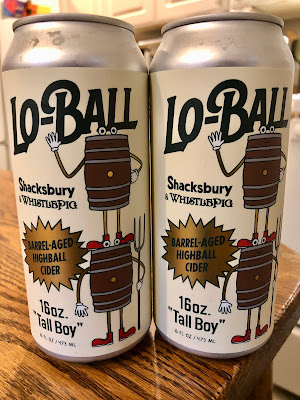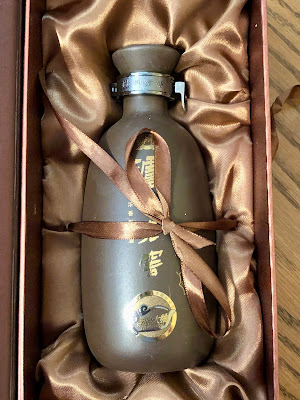Since 1987, that slogan, promoted by the National Pork Board, has tried to define the pork industry, offering pork as a lean alternative, more akin to chicken than beef. Farmers then sought to raise leaner pigs, and that became the standard for much of the industry. The promotion was successful, raising pork consumption by 20%.
You might be surprised that the USDA defines pork as a "red" meat. Their website states, "Pork is a red meat. Oxygen is delivered to muscles by the red cells in the blood. One of the proteins in meat, myoglobin, holds the oxygen in the muscle. The amount of myoglobin in animal muscles determines the color of meat. Pork is classified a red meat because it contains more myoglobin than chicken or fish."
Some believed that when pigs were bred to be leaner, their meat became less flavorful, like chicken, and it actually needed more fat to enhance its flavor. Thus, some farmers began raising heritage breeds, fattier pigs, to produce pigs with much more flavor. The general consumer might be most aware of the heritage Berkshire pigs, which can be found on numerous restaurant menus. If you've eaten Berkshire pork, you understand how more flavorful the pork can be than most factory farm pork.
However, many consumers might not be familiar with another heritage breed, the Mangalitsa, which is like the Waygu beef of the pork world. And when you view a piece of finely marbled Mangalitsa pork, you also understand why pork is a red meat.
The Mangalitsa, whose name means “hog with a lot of lard,” originated in the Austro-Hungarian empire during the first half of the 19th century, although the breed wasn't officially recognized until 1927. It is sometimes known as the "curly hair" pig, because of all of its curly hair, and it's said to be the last pig breed in existence with this type of hair.
Despite its initial popularity, the Mangalitsa pig nearly became extinct during the 1990s, with only a couple hundred remaining at that time. So, what was needed to save the Mangalitsa? To eat it!
Eat it to save it? That might seem contradictory at first, but it's not. If farmers don't believe there is a market for their products, they won't raise them. With so many people wanting lean pork, fewer farmers were willing to raise the fatty Mangalitsa. To save an animal, they need a purpose, a reason to be raised and produced. So, if more people desired to eat an animal, then more farmers would be willing to raise it, helping to grow the population. This philosophy has been successful in helping a number of endangered breeds.
As the Mangalitsa faced extinction, a Hungarian geneticist, Peter Toth, worked hard to spread the good word about this breed of pigs, convincing a number of farmers to raise them for their cherished meat and fat. They have since rebounded, and there are now around 50,000 Mangalitsa in the world, bringing them away from an endangered status. In the U.S., there is even a Mangalitsa Breed Organization & Registry Inc., founded in 2019, which registers U.S. Mangalitsa pigs and helps to educate breeders.
However, more work needs to be done, to educate consumers about the marvels of the delicious meat of this wondrous breed. It should be a household word, known and loved by all. Many American still know nothing about the Mangalitsa. Because of their ignorance, they are generally unwilling to pay more for Mangalitsa pork, so they need to be cognizant of the reasons why Mangalitsa is worth the cost. Once they taste it, and understand its richer flavor, that might be sufficient to change their minds.
There are generally three varieties of Mangalitsa pigs, differing primarily by color, and including the Blonde, Swallow-Bellied, and Red. A few other pure-breed varieties have gone extinct.
I've previously enjoyed Mangalitsa pork several times, although it's difficult to find in local restaurants, mostly offered as a Special rather than as a regular menu item. And it is nearly impossible to find in local markets.
So, on my recent trip to Vermont, I was thrilled to get the chance to visit Vermont Raised Mangalitsa Pigs, a farm in Springfield, Vermont, which raised this breed of pigs. I returned home with a bag of Mangalitsa pork products, which I purchased at the farm, and I strongly recommend that all pork lovers make the trip to southern Vermont to purchase some of this delicious Mangalitsa.
Betsy Lirakis, a strong, passionate and dedicated woman, owns the Top O' Hill Farm, and since 1985, she has been breeding American Curly horses, now being the oldest breeder of these horses. About ten years ago, she started raising Mangalitsa pigs as she was dissatisfied with the pork she found elsewhere. It lacked sufficient flavor and she knew better pork existed, but that she might need to produce her own. Although Mangalitsa are fatty pigs, Betsy loves fat, and stated that most people are taught to avoid fat, yet in moderation, there is nothing wrong with it. Especially Mangalitsa fat which has healthy aspects to it.
Betsy also mentioned that she often chooses the underdog, from Curly horses to curly pigs, but that also requires that she must educate people about her choices. I've found that as well when I champion an under-appreciated drink, like Sake or Sherry, that consumers need to be educated about those products, to correct their misconceptions. Mangalitsa pigs are worthy of attention, so more people need to understand their value, and tasting their meat is a great step forward. It can help persuade people where words might be insufficient.
First and foremost, Betsy is a farmer, a steward of the land, and it's extremely hard work. When I talked to Betsy, I didn't hear any complaints about that work either, simply a pride in her accomplishments, whether it was her horses or Mangalitsa. She truly cares for her animals, and tries to raise them in the best manner possible. Although she's fond of the Mangalitsa, they are raised to produce meat, so she doesn't try to form a close bond with them, despite their good nature. They aren't pets. At times, she will show some mild affection to them, but that is the extent.
One takeaway from my Vermont trip, after visiting three farms, was that these niche farmers, like Betsy, must become experts in their chosen field, often learning on the job, through trial and error. They are always learning, always trying to improve their operations. It's a drive to excel, a passion to be the best they can be. And consumers benefit from all their hard work.
Her truest passion is raising horses, the Curly Horse Farm, and its obvious why she forms a closer bond with her horses. She will spend years breeding and training the horses, so she naturally grows attached to them over that time, wanting only the best for them. When you spend that long with an animal, helping to develop it, learning and shaping its personality. then it is almost like a child to you. And when she eventually sells some of the horses, there is a natural worry over whether the new owner will treat the horses properly.
Betsy didn't know offhand how many pigs she currently owned, but stated it was on the lower end at the moment. She recalled a Ground Hog day of the past, where over a two-day period, four sows gave birth to a total of 35 piglets, all which survived. She selects for Mangalitsa that can survive, although they are generally easy to care for, very self-sufficient animals. I loved the varied coloration of the pigs and even after only a short time, you could discern they had individual personalities.
This sow was nearly ready to give birth on the day of our visit, and did so a couple days later. She only had four piglets, a small litter, but they were all healthy. Unfortunately, she kept the piglets hidden for a time so I wasn't able to see them on a second visit, although you can now see them on the farm's Facebook page.
The Mangalitsa is a slow growing pig, part of the reason some farmers dislike them. The average factory farm pig is slaughtered when it is about 6-7 months, but Betsy generally waits until her Mangalitsa are 14-15 months old, twice as long as a usual pig, and they commonly weigh about 220 pounds at that point. 14-15 months seems to be the usual amount of time many Mangalitsa farmers in the U.S. process their pigs. In Europe, they commonly wait three years to butcher a Mangalitsa.
Her pigs are processed at Maple Ridge Meats, in Fairhaven, Vermont, and a 150 pound pig will yield about 60 pounds of meat, with ham being the dominant meat, about 16% of the total. It will also yield about 15 pounds of lard. Betsy's biggest challenge is to get consumers to pay the higher prices for Mangalitsa than the usual pork found at the supermarkets. You pay more for quality meat, and there is a significant difference in the taste between factory-farmed pork and Mangalitsa.
Betsy sells a wide variety of Mangalitsa products, from sausages to country ribs, ham to tenderloin, ground pork to kielbasa, and even a whole head. The meat generally sells for about $9-$20 a pound, and although that is more expensive than most factory-farm pork products, the quality is much better and it is worth the extra cost. And you know that it is a local product, raised well, and without the well-known issues of factory-farm meats. I loaded up on a variety of meats, and have started sampling some of what I purchased.
The Sweet Italian Pork Sausage were delicious, and I simply cooked them in the oven. They were juicy and tender, with a tasty melange of spices. You could enjoy them as is, although they would also go well in a pasta sauce or on the grill with your favorite BBQ sauce.
Betsy really loves Shoulder Bacon, also known as Cottage Bacon. Most bacon comes from the pork belly but this bacon comes from the pork shoulder, which creates a meatier bacon. It definitely tastes like bacon, but is a bit thicker, and with less fat, although the fatty parts are silky smooth. The ends of this bacon still crisp up some so you get a crunch from that section. This is a compelling alternative to regular bacon, and I'm surprised more restaurants and markets don't sell Shoulder Bacon.
Over the weekend, I also enjoyed a Mangalitsa Pork Tenderloin, which was very tender, juicy and flavorful. Certainly better than the usual pork tenderloin you find at the grocery store. It was a pure pleasure to eat, and it would impress your family and friends if you prepared it for them for a special dinner, or just a regular Wednesday night. I paired this tenderloin with an Oregon Pinot Noir, which proved to be an excellent pairing.
As I mentioned previously, a 150 pound pig will generally produce about 15 pounds of lard. What do you do with that lard? Lard is basically pork fat that has been rendered down to a liquid. Betsy told me that lard is a hard sell, and that is basically because lard was demonized when people began seeking low fat alternatives. However, your grandparents may have used lard all the time, cooking and baking with it.
Science has helped to rehabilitate lard, and shown that lard has less saturated fat than butter, and thus, used in moderation, isn't really unhealthy. Lard also has components which produce a far flakier pie crust than butter, which is why it has long been prized by bakers. Other cultures around the world embrace lard in their cooking. I bought a large hunk of Mangalitsa leaf lard and plan to experiment with it in the near future.
Interestingly, in 2018, the global lard market revenue was $15.7 billion, an increase of 2.9% from 2017, and 40% of that consumption was in China. Germany was the #2 consumer, with only 10% of the total consumption. Americans is still very low on the lard consumption scale and they need to embrace lard, to forget their preconceptions about it being so harmful.
Interestingly, in 2018, the global lard market revenue was $15.7 billion, an increase of 2.9% from 2017, and 40% of that consumption was in China. Germany was the #2 consumer, with only 10% of the total consumption. Americans is still very low on the lard consumption scale and they need to embrace lard, to forget their preconceptions about it being so harmful.
As lard is a hard sell, the farm uses it to make soaps and lotions. This make sense as lard is rich in vitamins that can make your skin healthier, and acts as a mild moisturizer. They produce various flavors of their soaps and lotions, such as Vanilla Lotion, Peppermint & Rosemary Lotion, Citrus & Star Anise Soap, Rosemary Mint Soap, and Rose Geranium Soap. I got a soap and couple lotions to try as well.



















































